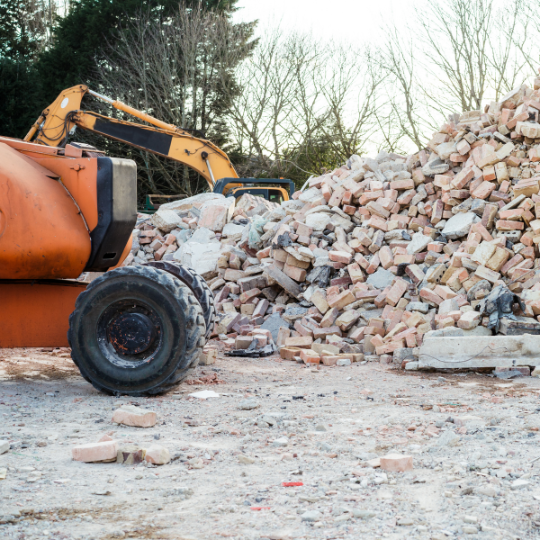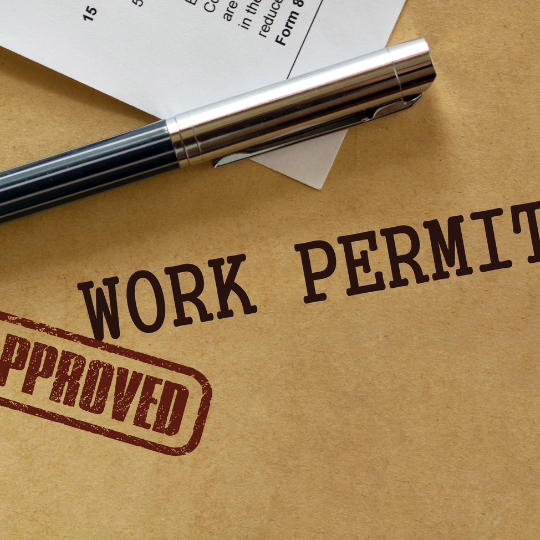How to Efficiently Manage Concrete Debris Removal Projects in Sanford
Navigating the intricacies of concrete debris removal projects in Sanford requires a strategic approach and efficient management. In this guide, we’ll unravel the complexities of handling concrete waste, offering practical insights that transcend the jargon. From small-scale renovations to large construction sites, our focus is on simplicity and effectiveness. Uncomplicating the process, we delve into the basics, ensuring that even those new to the field can grasp the essentials. Discover cost-effective solutions, time-saving techniques, and environmental considerations to streamline your concrete debris removal endeavors. So, whether you’re a seasoned professional or a newcomer in construction, this guide is your roadmap to mastering the art of efficient concrete debris management in Sanford.
Understanding Local Regulations and Obtaining Permits for Concrete Debris Removal in Sanford
Embarking on a concrete debris removal project in Sanford demands a meticulous understanding of the local regulatory landscape and obtaining the requisite permits. This initial step is paramount as it sets the foundation for a successful and legally compliant removal process. Below, we delve into the nuances of this crucial phase and explore the intricacies of compliance with environmental and safety standards.

Research Local Regulations
Begin by conducting thorough research on the specific regulations governing construction and debris removal in Sanford. Regulations can vary, covering aspects such as permissible disposal methods, noise restrictions, and environmental impact assessments. Familiarizing yourself with these regulations is pivotal to avoiding legal entanglements and ensuring a smooth progression of the removal project.
Environmental Compliance
Sanford, like many locales, places a premium on environmental conservation. Understand the environmental standards applicable to your project, including guidelines for dust control, water runoff, and the preservation of natural habitats. Implementing eco-friendly practices not only ensures compliance but also reflects a commitment to sustainable construction practices.
Safety Standards Adherence
Safety is paramount in any construction project. Gain a comprehensive understanding of the safety standards mandated by Sanford’s regulatory authorities. This includes protocols for worker safety, equipment operation, and emergency response plans. Adhering to these standards not only mitigates the risk of accidents but also demonstrates a dedication to the well-being of the project’s workforce.

Permit Acquisition Process
Navigating the permitting process is a critical aspect of compliance. Identify the specific permits required for concrete debris removal, such as waste disposal permits, environmental impact assessments, and any other documentation mandated by local authorities. Initiating the permit acquisition process well in advance ensures that there are no delays in the project timeline.
Consultation with Regulatory Agencies
Engage in proactive communication with local regulatory agencies. Seek guidance on the specific requirements for your concrete debris removal project and address any queries or concerns they may have. Establishing an open line of communication fosters a collaborative relationship and may expedite the permitting process.
Legal Consequences of Non-Compliance
Understanding the potential legal consequences of non-compliance is essential. Violations of local regulations can result in fines, project stoppages, or even legal action. Prioritizing compliance not only safeguards the project but also upholds the reputation of the construction team and stakeholders involved.
Conducting a Thorough Site Assessment for Effective Concrete Debris Management
A critical first step in any concrete debris removal project in Sanford is the meticulous process of conducting a comprehensive site assessment. This initial phase sets the foundation for the entire project, providing valuable insights into the nature and extent of the concrete debris, ultimately influencing the planning and execution of the removal process.
- Understanding the Scope: Begin by gaining a thorough understanding of the project’s scope. This involves identifying the specific areas where concrete debris needs to be removed, taking into account factors such as the size of the site, the type of construction, and any unique challenges present.
- Inventory of Concrete Debris: Create an inventory of the concrete debris on-site, detailing its type, size, and quantity. This inventory serves as a crucial reference point for planning and aids in determining the most efficient removal methods. Categorize the debris based on factors such as demolished structures, discarded materials, or excess concrete from the construction process.
- Environmental Considerations: Assess the environmental impact of the concrete debris. Identify any hazardous materials or potential contaminants that may require special handling or disposal procedures. This consideration ensures compliance with local environmental regulations and promotes responsible waste management practices.
- Accessibility and Logistics: Evaluate the accessibility of the site and the logistical challenges involved in removing the concrete debris. Consider factors such as the proximity of removal areas to access points, potential traffic disruptions, and the availability of space for waste staging. This assessment aids in developing a realistic timeline and efficient workflow for the removal process.
- Budgetary Constraints: Understand the budget constraints associated with the concrete debris removal project. This involves estimating costs related to equipment rental, labor, disposal fees, and any potential unforeseen expenses. A clear understanding of the budget allows for effective resource allocation and project management.
- Integration with Overall Project Timeline: Align the concrete debris removal timeline with the overall project schedule. Identify critical milestones and deadlines to ensure that the removal process does not impede other construction activities. Coordination with other project teams is crucial to maintaining a seamless workflow.
- Risk Assessment: Conduct a risk assessment to identify potential safety hazards during the concrete debris removal process. This includes assessing the stability of structures, potential for equipment malfunctions, and the presence of any underground utilities. Implementing safety measures based on this assessment is paramount for protecting the well-being of the project team.
By undertaking a thorough site assessment encompassing these key considerations, construction professionals in Sanford can lay the groundwork for a successful concrete debris removal project. This detailed understanding of the site’s unique characteristics allows for informed decision-making, efficient planning, and the implementation of appropriate removal methods tailored to the specific requirements of the project.
Invest in Quality Equipment
Investing in quality equipment is a cornerstone of efficient concrete debris removal in Sanford. The success of a project often hinges on the reliability and capability of the machinery employed. In this section, we’ll delve deeper into the importance of selecting the right equipment and how it contributes to both the speed and safety of the removal process. When it comes to concrete debris removal, the sheer volume and weight of the material necessitate robust machinery. Excavators are indispensable for their versatility in handling various types of debris. Their ability to dig, lift, and load large amounts of concrete makes them a primary choice for construction projects in Sanford. Ensure that the excavators chosen for your project have the necessary attachments for efficient debris handling.
Implementing Segregation Practices for Efficient Concrete Debris Management
Proper segregation of concrete debris is a pivotal step in the construction waste management process. By sorting the debris into different categories based on size and type, construction projects in Sanford can significantly enhance their recycling efforts, reduce environmental impact, and promote sustainability.
Here’s a detailed exploration of the best practices for implementing effective segregation:
- Categorize by Size: Begin the segregation process by categorizing concrete debris based on size. Larger pieces may have different recycling or disposal requirements compared to smaller fragments. This initial separation sets the foundation for a streamlined recycling and disposal workflow.
- Differentiate by Type: Beyond size, consider the type of concrete debris generated during the construction project. Separate materials like concrete blocks, slabs, and reinforced concrete structures. This differentiation facilitates targeted recycling methods and ensures that each type is appropriately processed.
- Identify Hazardous Materials: Conduct a thorough assessment to identify any hazardous materials within the concrete debris. Segregate materials containing substances such as asbestos or chemicals that require special handling and disposal procedures. This ensures compliance with environmental regulations and promotes worker safety.
- Establish Designated Collection Areas: Designate specific collection areas for each category of concrete debris. Clearly mark these zones on the construction site to facilitate easy identification and collection by the workforce. This organized approach expedites the removal process and minimizes the risk of mixing different materials.
- Educate Workforce: Ensure that the construction team is well-informed about the segregation practices in place. Conduct training sessions to educate workers on the importance of proper segregation and provide guidelines on how to differentiate between materials based on size and type. A knowledgeable workforce is crucial for the success of the segregation process.
- Use Color-Coded Containers: Employ a color-coded system for containers used to collect segregated concrete debris. For instance, use different-colored bins for various sizes or types of materials. This visual cue makes it easier for workers to adhere to the segregation guidelines and minimizes the chances of errors.
By implementing these segregation practices, construction projects in Sanford can optimize their concrete debris management, promote sustainability, and contribute to a greener and more environmentally responsible construction industry.
Conclusion
JUNKAHAULICS – Raleigh stands as a reliable solution for efficiently managing concrete debris removal projects in Sanford. With a dedicated team and a commitment to excellence, we prioritize streamlined processes to ensure prompt and effective removal of concrete debris. Our extensive experience in the field, coupled with the use of advanced equipment, positions us as a trusted partner for construction projects in Sanford. At JUNKAHAULICS, we understand the importance of a clean and organized construction site, and our team is dedicated to providing top-notch services, making us the go-to choice for concrete debris removal in the area. Contact us at 919-478-4814 to experience the superior quality of our services firsthand.




